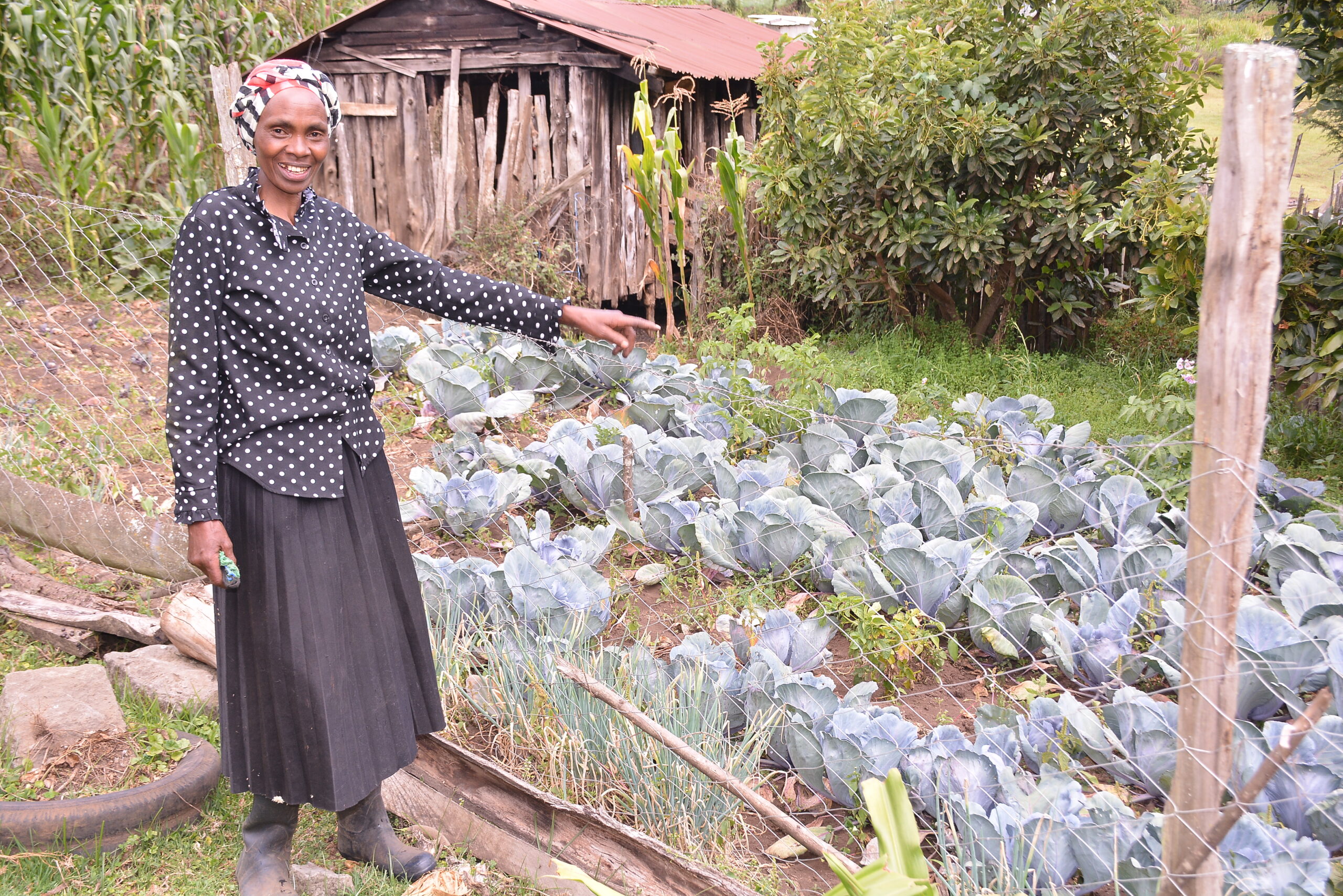Groundbreaking Workshop on AI and Technology-Facilitated Gender-Based Violence at AWiM24
Trending
Monday June 2, 2025
Trending

It is one of the hot days in early February when a group of East African journalists venture on a field trip as part of the workshop programme on reporting water issues in Africa. Most lands in Nyandarua County in Central Kenya lie idle, with shrubs of weeds that sprouted after last year’s harvest. Farmers are eagerly waiting for the rains to fall before tilling the land, ready for the planting season. With the clear blue skies, it is hard to tell whether the rain gates will open soon.
Things are different for Phillis Wanjiru a farmer from Sasumua Dam Village in South Kinangop Sub-county. The shade from the numerous fruit trees in her compound keeps away the heat from the tormenting sun. On one corner of her farm stands a greenhouse that is housing soon-to-be harvested strawberries and arrowroots. A few strides from this structure are healthy purple cabbage stalks basking in the sun. Her calm cattle and sheep seem to be enjoying the juicy napier grass she had previously sourced from her farm. Unlike some of the neighbouring farms that are currently dormant, her 2.5 acres piece of land is half-filled with green flowering maize plants and a variety of vegetables.
Agriculture was never a walk in the park for the 56-year-old farmer in previous years. Similar to most farmers in the country, Phillis was previously a seasonal farmer who depended entirely on rain-fed agriculture. Moreover, she used to get poor yields since she lacked the knowledge of sustainable and climate-smart farming.
Things took a turn in 2017 when she was introduced to the Upper Tana Nairobi Water Fund Project UTNWFP.
Rainwater harvesting and irrigation
Sasumua Dam was constructed many years ago to serve Nairobi City residents with water. The water sourced from a tributary of Chania River, originating from the nearby Aberdare Mountains, is collected and treated at the dam site and then disbursed to Kenya’s capital city. Since the construction of a dam interferes with the upstream ecosystem, initiatives are put in place to ensure communities living in the watershed areas are sustained. In collaboration with the Sasumua Water Resource Users Association, the UTNWFP started a program to benefit farmers living in the upstream part of the water reservoir. In turn, the communities give back to the fund by conserving the catchment area.

Water is a valuable resource in growing crops and rearing animals. Agriculture accounts for 70 per cent of global freshwater withdrawals. Therefore, farmers must have a supply of water to enable food production. One of the core initiatives of the Water Fund program is to educate small-scale farmers living in the area on how to harvest, harvest and sustain rainwater through the construction of water pans. The project aims at boosting food production in such areas, especially during dry seasons.
With the knowledge acquired from her teacher James Munyua, Phillis constructed a water pan. When rain falls, the gutters that tightly secure her house roof collects and guides water into a large tank. Once the tank is full, Phillis opens the tap attached to it to lead water into the reservoir via connected pipes. The reservoir is a deep pit whose walls are lined with special polythene. The paper is essential in holding the harvested water for a long period of time to prevent it from sipping through the ground. The open pit is then covered by a wire mesh for security reasons. It is easy to trap runoff water in the pit since her farm is on a slope. She then pumps the collected water from the reservoir to the farm at her convenient time. Philis has been educated on the amount of water to pump in her farm to prevent plants from being destroyed by excess water. Phillis can now farm all year long, no matter the weather, as long as the reservoir has water.
The only challenges she faces are fuel and the adverse effects of climate change. She is affected by the ever-increasing fuel prices in the country since she uses fuel to pump the water to her farm. Phillis hopes to acquire a solar panel which is not only a cheap source of energy but also friendly to the environment. In addition, The change in weather patterns alters the water harvesting process. She prays for the rain to fall soon so she can refill the half-empty water pan.
Soil conservation
Apart from the knowledge of rainwater harvesting, Phillis has acquired improved agricultural skills. Previously, she had a challenge with soil erosion where rainwater could sweep away the fertile soil and fertilizer from her farm.
“When it used to rain, I would lose most of the good soil through water runoff. I used to have poor harvests because I did not know how to conserve soil and water. But after interacting with my teacher, I was taught about terrace farming and planting fruit trees like Avocados and pears. I was also taught the need of planting napier grass on the terrace borders to hold the soil when it rains. Since then, my soil is intact. As you can see behind me, the crops are healthy too.”
Peter Njuguna, a water officer in Nyandarua County, says they collaborate with agricultural extension officers to sensitize farmers about improved agriculture with an aim of conserving the water catchment area. They teach them ways of stabilizing the soil through afforestation, rainwater harvesting and terrace farming to prevent silting of the dam that may be caused by soil erosion.
“Since this is a sloppy area, rainwater sweeps the farm soil that is composed of fertilizers and other chemicals into the rivers that lead to the dam. In turn, it reduces the quality of water gathered for treatment. We, therefore, teach farmers how to conserve and protect their soil. This in turn provides quality water for the treatment plant.”
Economic benefit
The mother of four is now earning a living from smart-climate farming practices. She currently practices diverse agriculture unlike before when she only focused on potatoes and cabbages. Through her plentiful harvest, she has improved her lifestyle, as evident by the ongoing construction of a permanent house.
“As you can see, I will be harvesting strawberries and avocados soon. With the earnings I get from the harvest, I can now boost the income my husband gets from his mechanic job. Moreover, I don’t burden my children with requests for upkeep money.” She says.
The successful implementation of the Water Fund aims at meeting several United Nation’s Sustainable Development Goals, among them being SDG 1; zero poverty, SDG 2; No hunger, SDG 5; gender equality, SDG 6; water and sanitation, SDG 8; decent work and economic growth, SDG 11 sustainable cities and communities, and SDG13 climate action.
Phillis is among the many women who have benefited from the implementation of the Water Fund in Nyandarua. She now calls on other women to embrace similar programs to help them sustain their livelihoods, families and the country’s economy at large.
This story was developed with the help of Africa21.org and Water Diplomat.
We’re not gonna spam. We’ll try at least.

Copyright 2020. African Women In Media
Copyright 2020. African Women In Media
Recent Comments